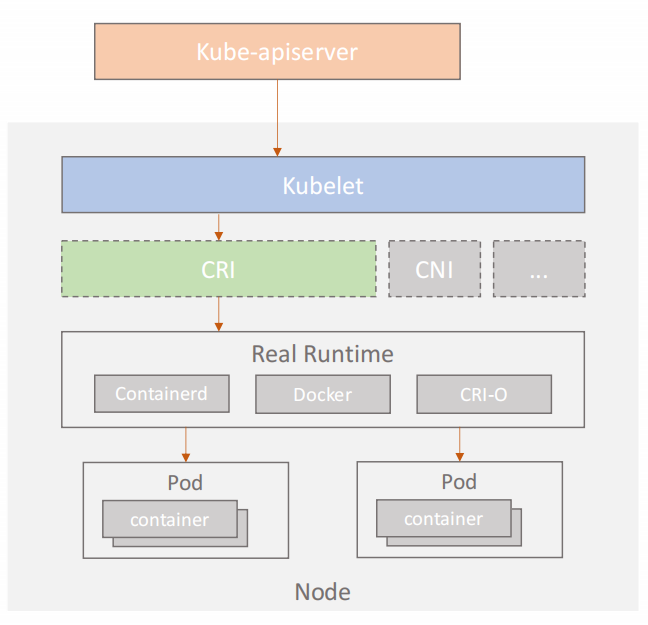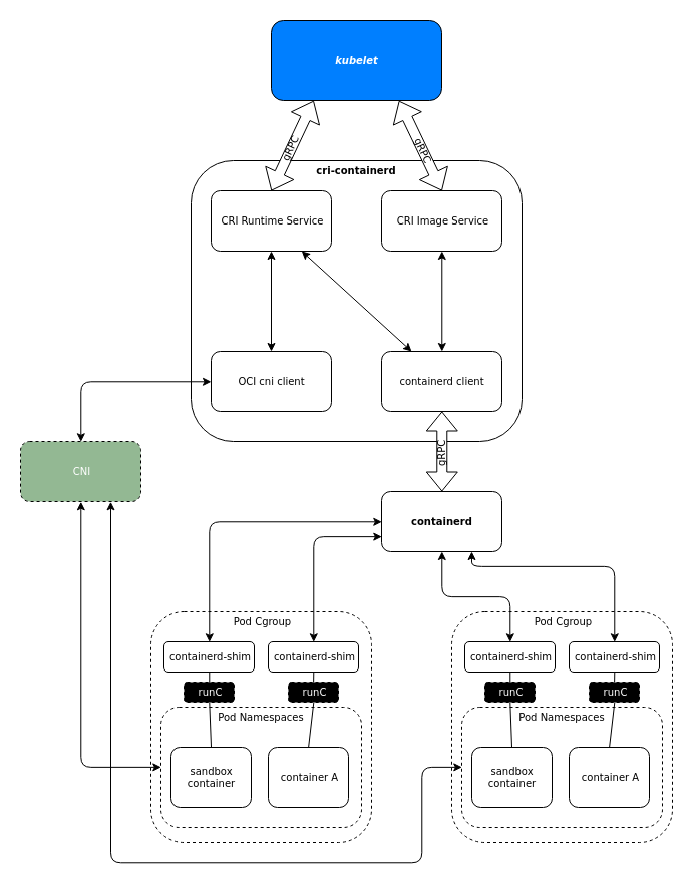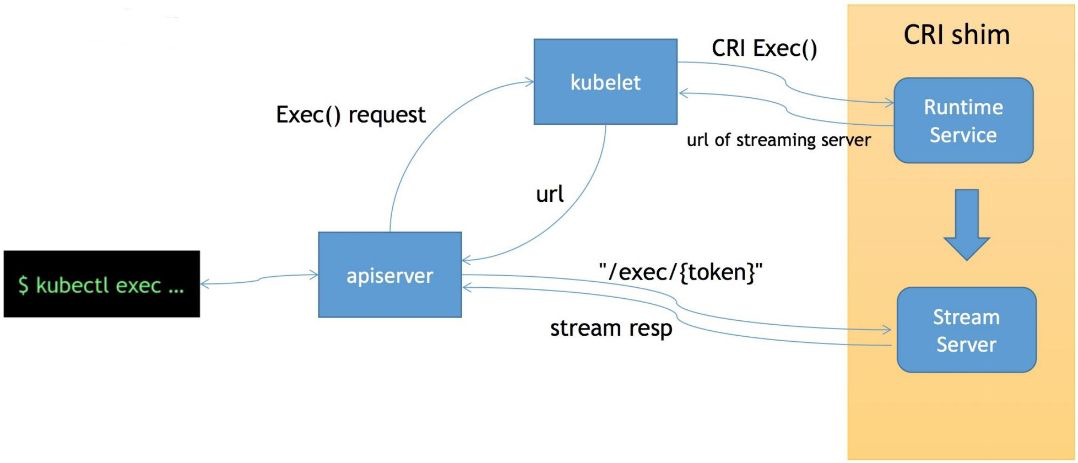简介
《深入剖析Kubernetes》:kubelet 调用下层容器运行时的执行过程,并不会直接调用Docker 的 API,而是通过一组叫作 CRI(Container Runtime Interface,容器运行时接口)的 gRPC 接口来间接执行的。Kubernetes 项目之所以要在 kubelet 中引入这样一层单独的抽象,当然是为了对 Kubernetes 屏蔽下层容器运行时的差异。

理解容器运行时接口CRI有一句话说得很好,「软件问题都可以通过加一层来解决」,我们的 CRI 就是加了这样一层。
kubelet 与 CRI

目前 dockershim 还是存在于 Kubelet 的代码中的,它是当前性能最稳定的一个容器运行时的实现。除了 dockershim 之外,其他容器运行时的 CRI shim,都是需要额外部署在宿主机上的。
CRI 接口
CRI 标准的制定是自上而下的,通过 Kubernetes 的一些 feature 反向地要求 CRI 提供这样的功能,进而完善 CRI 规范。

CRI实现了两个GRPC协议的API,提供两种服务ImageService和RuntimeService。
// grpcServices are all the grpc services provided by cri containerd.
type grpcServices interface {
runtime.RuntimeServiceServer
runtime.ImageServiceServer
}
// CRIService is the interface implement CRI remote service server.
type CRIService interface {
Run() error
// io.Closer is used by containerd to gracefully stop cri service.
io.Closer
plugin.Service
grpcServices
}
CRI的实现CRIService中包含了很多重要的组件:其中最重要的是cni.CNI,用于配置容器网络。还有containerd.Client,用于连接containerd来创建容器。
// criService implements CRIService.
type criService struct {
// config contains all configurations.
config criconfig.Config
// imageFSPath is the path to image filesystem.
imageFSPath string
// os is an interface for all required os operations.
os osinterface.OS
// sandboxStore stores all resources associated with sandboxes.
sandboxStore *sandboxstore.Store
// sandboxNameIndex stores all sandbox names and make sure each name
// is unique.
sandboxNameIndex *registrar.Registrar
// containerStore stores all resources associated with containers.
containerStore *containerstore.Store
// containerNameIndex stores all container names and make sure each
// name is unique.
containerNameIndex *registrar.Registrar
// imageStore stores all resources associated with images.
imageStore *imagestore.Store
// snapshotStore stores information of all snapshots.
snapshotStore *snapshotstore.Store
// netPlugin is used to setup and teardown network when run/stop pod sandbox.
netPlugin cni.CNI
// client is an instance of the containerd client
client *containerd.Client
......
}
我们知道 Kubernetes 的一个运作的机制是面向终态的,在每一次调协的循环中,Kubelet 会向 apiserver 获取调度到本 Node 的 Pod 的数据,再做一个面向终态的处理,以达到我们预期的状态。循环的第一步,首先通过 List 接口拿到容器的状态,再通过 Sandbox 和 Container 接口来创建容器,另外还有镜像接口用来拉取容器镜像。
需要注意的是,我们的 CNI(容器网络接口)也是在 CRI 进行操作的,因为我们在创建 Pod 的时候需要同时创建网络资源然后注入到 Pod 中(PS:CNI包含在创建Pod 这个动作里)。接下来就是我们的容器和镜像。我们通过具体的容器创建引擎来创建一个具体的容器。
CRI streaming 接口
它可以用来在容器内部执行一个命令,又或者说可以 attach 到容器的 IO 流中做各种交互式的命令。

首先 exec 操作会发送到 apiserver,经过鉴权,apiserver 将对 Kubelet Server 发起 exec 的请求,然后 Kubelet 会调用 CRI 的 exec 接口将具体的请求发至容器的运行时。这个时候,容器运行时不是直接地在 exec 接口上来服务这次请求,而是通过我们的 streaming server 来异步地返回每一次执行的结果。也就是说 apiserver 其实实际上是跟 streaming server 交互来获取我们的流式数据的。这样一来让我们的整个 CRI Server 接口更轻量、更可靠。
CRI 相关工具
crictl是一个类似 docker 的命令行工具,用来操作 CRI 接口。它能够帮助用户和开发者调试容器问题,而不是通过 apply 一个 yaml 到 apiserver、再通过 Kubelet 操作的方式来调试。这样的链路太长,而这个命令行工具可以直接操作 CRI。